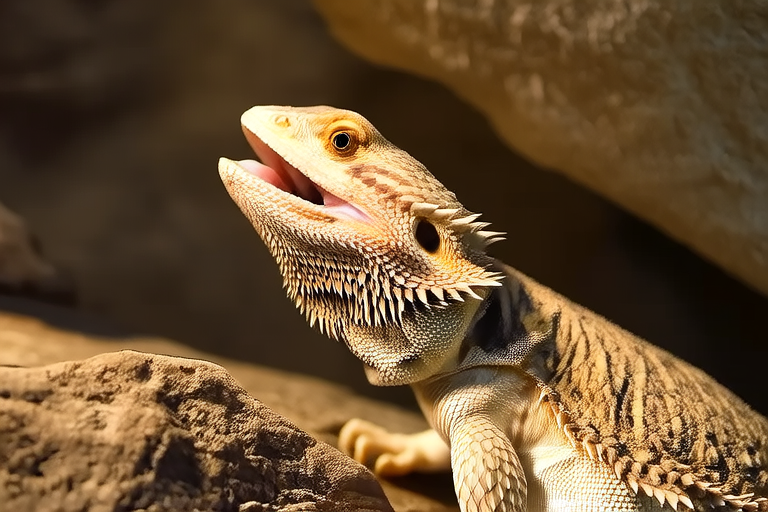Top 10 Fascinating Facts About Bearded Dragons Every Owner Should Know
If you’re a reptile enthusiast or considering adopting a bearded dragon as a pet, you’re in for a treat! These charismatic lizards are beloved for their unique personalities, striking appearance, and relatively easy care requirements. Whether you’re a seasoned owner or just starting your journey into the world of reptiles, here are ten fascinating facts about bearded dragons that will deepen your appreciation for these incredible creatures.
1. They Are Native to Australia’s Arid Regions
Bearded dragons originate from the dry, arid regions of Australia, including deserts, woodlands, and scrublands. Their natural habitat is characterized by extreme temperatures, with scorching days and chilly nights. This adaptation to harsh environments makes them resilient pets but also means they require specific conditions in captivity, such as a basking spot and a cooler area in their enclosure. Mimicking their native environment ensures they thrive in your care.
2. Their “Beard” Serves Multiple Purposes
The iconic “beard” of a bearded dragon is more than just a stylish feature—it plays a vital role in communication and defense. When threatened or stressed, a bearded dragon can puff out its throat, making the spiny scales around its neck appear larger and more intimidating. This display serves as a warning to potential predators. Additionally, males often darken their beards during mating season to attract females, showcasing their vibrant colors.
3. They Can Change Color Temporarily
While not as dramatic as chameleons, bearded dragons have the ability to slightly change their skin color. This adaptation helps them regulate body temperature—darkening their skin absorbs more heat, while lightening it reflects sunlight. Observing this subtle color shift can give you insights into your pet’s comfort level and whether adjustments to their habitat are needed.
4. Bearded Dragons Are Omnivores with Unique Dietary Needs
One of the most important aspects of caring for a bearded dragon is understanding their omnivorous diet. Juveniles primarily eat insects like crickets and mealworms to support their rapid growth, while adults lean toward a plant-based diet supplemented with occasional protein. Leafy greens, squash, carrots, and safe fruits should make up the bulk of an adult’s meals. Always ensure insects are gut-loaded (fed nutritious food) before offering them to your dragon to maximize nutritional value.
5. They Communicate Through Body Language
Bearded dragons are masters of non-verbal communication. From head bobbing to arm waving, each gesture has meaning. For example, a slow arm wave indicates submission, often seen when one dragon acknowledges another’s dominance. Head bobbing, on the other hand, signals aggression or territorial behavior. Understanding these cues allows you to better interpret your pet’s mood and address any stressors promptly.
6. Brumation Is Part of Their Natural Cycle
Similar to hibernation in mammals, brumation is a period of dormancy that some bearded dragons experience during colder months. During this time, they may become less active, eat less, or even stop eating altogether. While not all captive dragons brumate, those that do require special attention. Ensure they stay hydrated and maintain appropriate humidity levels in their enclosure. If unsure, consult a veterinarian familiar with reptiles for guidance.
7. They Have a Third Eye!
Yes, you read that right—bearded dragons possess a parietal eye, often referred to as a “third eye,” located on top of their heads. This primitive eye detects changes in light and shadow, helping them sense approaching predators from above. While it doesn’t provide detailed vision, it adds an extra layer of awareness to their already impressive survival toolkit.
8. Social Behavior Varies Among Individuals
Unlike many reptiles, bearded dragons exhibit varying degrees of sociability. Some enjoy gentle handling and interaction, forming bonds with their owners, while others prefer solitude. It’s essential to respect your dragon’s personality and comfort zone. Start with short, calm handling sessions and observe their reactions to gauge what works best for both of you.
9. Proper UVB Lighting Is Crucial for Health
UVB lighting isn’t optional—it’s absolutely critical for your bearded dragon’s well-being. In the wild, they absorb ultraviolet rays from the sun to synthesize vitamin D3, which aids calcium absorption and prevents metabolic bone disease. Without adequate UVB exposure, your pet could develop serious health issues. Invest in a high-quality UVB bulb designed for desert reptiles and replace it regularly according to the manufacturer’s recommendations.
10. Lifespan Can Reach Up to 10-15 Years
With proper care, bearded dragons can live for over a decade, making them a long-term commitment. This longevity underscores the importance of providing consistent, high-quality care throughout their lives. Regular vet check-ups, a balanced diet, and a clean, enriching environment contribute to their overall health and happiness. Before bringing a bearded dragon home, consider whether you’re ready for this rewarding yet enduring responsibility.
Final Thoughts
Bearded dragons are truly remarkable creatures with a wealth of intriguing traits that make them wonderful companions. By understanding their origins, behaviors, dietary needs, and health requirements, you’ll be equipped to provide the best possible care. Remember, every dragon is unique, so take the time to learn about your pet’s individual preferences and quirks. With patience and dedication, you’ll forge a bond that lasts a lifetime.
Whether you’re a first-time reptile owner or a seasoned enthusiast, these top ten facts offer valuable insights into the captivating world of bearded dragons. Share your experiences and tips with fellow reptile lovers, and continue exploring the joys of keeping these amazing animals as pets!
